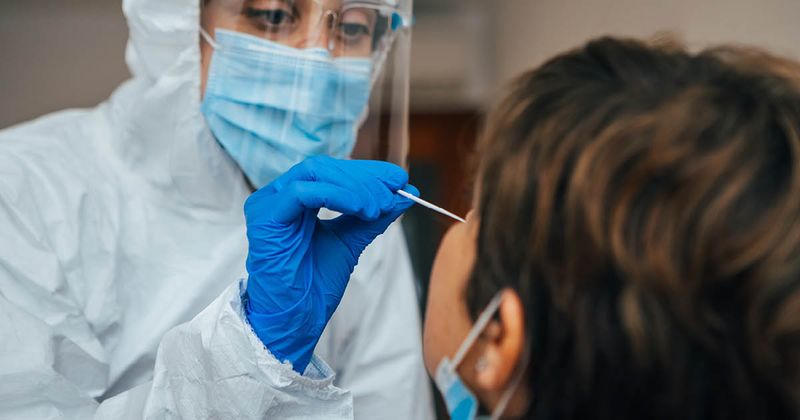Nearly half of HCWs with COVID-19 worked despite symptoms
Click Here to Manage Email Alerts
Key takeaways:
- Approximately 50% of symptomatic health care workers worked at least part of 1 day with COVID-19 symptoms.
- Many worked because of concerns regarding workload burdens for coworkers.
Nearly half of health care workers who tested positive for COVID-19 continued working at least part of 1 day with symptoms, according to a study published in Infection Control & Hospital Epidemiology.
“We saw quite a few health care workers (HCWs) come to work knowing they had COVID-19 symptoms,” Katherine LinsenmeyerMD, attending physician at Veterans’ Affairs Boston Healthcare System and assistant professor of medicine at Boston University, told Healio. “These HCWs both knew that COVID-19 was very transmissible and had paid leave available, so we wanted to understand why they continued to work.”

Linsenmeyer and colleagues conducted an observational cohort study including 255 HCWs at the Veterans’ Affairs Boston Healthcare System who tested positive for COVID-19 infection via PCR test between Dec. 1, 2020, and Sept. 30, 2021.
For the study, presenteeism was defined as working at least part of a day while newly symptomatic with COVID-19. According to the study, workers who reported COVID-19 symptoms during the study were then sent an anonymous survey to assess reasons for presenteeism between Oct. 21, 2021, and Nov. 21, 2021.
During the study, 327 of approximately 4,000 HCWs tested positive for COVID-19, 255 of whom were symptomatic. Of those who were symptomatic, 168 had at least one COVID-19-specific symptom, whereas 87 had nonspecific symptoms. Among symptomatic HCWs, 127 (49.8%) reported presenteeism at the time of diagnosis, and of those 127, 66, or 26% of all symptomatic HCWs, worked at least part of a day and then returned to work for second or additional days with COVID-19 symptoms.
Among all survey respondents, concerns over workload burden for coworkers (66%) and personal responsibility were reported most frequently (45%) vs. limits on paid leave (19%) or perceived expectations to work while sick (10%).
“Providers faced a tough choice, and a perception that they knew how to take precautions to avoid getting others sick may have, in turn, led to a perception of decreased risk,” Linsenmeyer said. “We think new strategies are needed to help HCWs better reconcile their duty to do no harm with their duty to provide or support care.”

